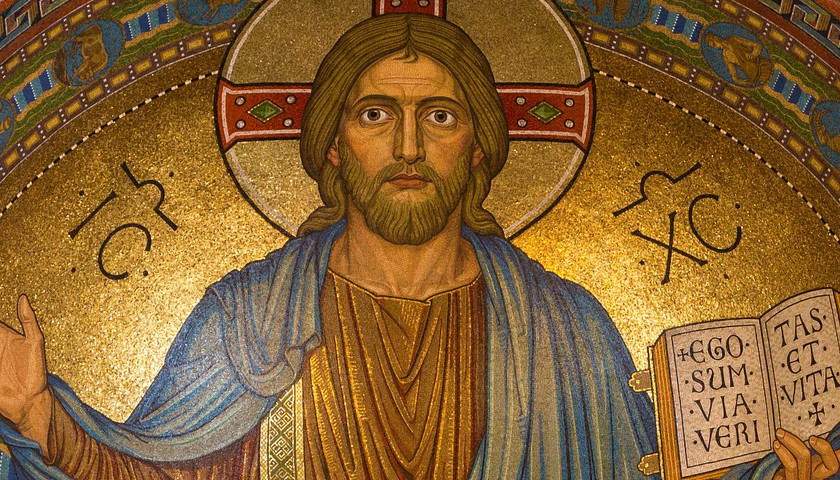by Jarret Stepman
It’s become increasingly clear that many in our nation’s elite media know little to nothing about religion—Christianity in particular.
This is a disturbing trend for the future of our country.
A long list of theological gaffes by The New York Times over the years was recently catalogued in an insightful New York Post editorial by Mark Hemingway.
Among the Times’ errors was an article in 2013 that referred to Easter as a celebration of Jesus’ resurrection into heaven. It soon issued a correction, since Jesus did not immediately ascend to heaven after resurrection—that was weeks later.
Another piece claimed that the Holy Sepulcher in Israel is where “Christians believe Jesus is buried,” even though Christians believe Jesus was resurrected and thus would not be in a tomb.
And then there was the most recent blunder, in which the Times claimed that Father Jean-Marc Fournier saved a statue of Jesus from the Notre Dame fire.
What Fournier actually saved was the Blessed Sacrament—which is, of course, not a statue but the bread used in Communion, believed by Catholics to be the real body of Christ.
It appears that the Times struggles to understand the phrase “the body of Christ,” as do writers at The Washington Post.
These somewhat laughable errors are not isolated incidents, but part of a trend. The New York Times is not alone in its failure to accurately present Christianity.
Following the burning of the Notre Dame Cathedral, the Associated Press ran a piece with the utterly tone-deaf headline: “Tourist Mecca Notre Dame Also Revered as Place of Worship.”
The article was quite informative, but it’s simply astonishing that Associated Press editors think readers need to be informed that a famous cathedral is a place of worship.
In 2018, a report in The Wall Street Journal misquoted Israeli Prime Minister Benjamin Netanyahu saying that “Moses brought water from Iraq.” What he really said is that Moses drew water from a rock, an event described in the book of Exodus.
Certainly everyone makes mistakes, and reporters should not be expected to be theologians.
But a complete lack of understanding of the most basic elements of a religion—one which has been at the heart of Western civilization for nearly two millennia—is inexcusable.
Without at least rudimentary knowledge of religion and Christianity, it’s difficult to understand even our own country’s history in a meaningful sense—and it’s just as difficult to understand the lives of millions of Americans for whom religion is a central part of their lives.
An American who knows little about religion, and in particular Christianity, will feel like a foreigner when studying the American past. Our rhetoric and most famous works are shot through with religious language and concepts, often derived from the Bible.
Thomas Paine wrote “Common Sense” in 1776 in an effort to build support for American independence. Paine was a notable religious skeptic, but nevertheless filled the text of his pamphlet with biblical allusions—specifically, to the evils of monarchy.
When Abraham Lincoln delivered his famed “House Divided” speech in 1858, pointing out how America could not continue as a nation half slave and half free, most Americans would have known he was referencing the Gospels. Christ originally coined the phrase “a house divided against itself cannot stand” to describe the exorcism of demons.
And there are countless other direct and indirect references to Christianity and religion throughout our history.
Christianity has evolved in our country’s history, experiencing periods of growth and decline. But what at least remained constant was that virtually all Americans, regardless of personal faith, spoke the “language” of the Bible and had some basic understanding of its teachings.
That just isn’t the case today.
As my colleague Daniel Davis wrote about the trend of biblical illiteracy, especially in the years since religion was expunged from public schools in the 1960s:
The religion-free classroom has trained too many Americans to think of religion as an aberration from reason, a private option that doesn’t really make claims on the world around us. So religion has been ghettoized, and secularism has filled the void once occupied by a Judeo-Christian worldview.
This seems to be particularly the case in our newsrooms, which all too often lack a religious perspective.
So much for diversity.
The bottom line is that it’s impossible to understand or explain the United States without at least a cursory understanding of the Bible and Christianity—not to mention history in general.
We should demand such awareness from those who are tasked with informing us about what’s happening in our country and our world. Such ignorance is just one more reason why the press has lost credibility and the trust of ordinary Americans.
– – –
Jarrett Stepman is an editor and commentary writer for The Daily Signal and co-host of “The Right Side of History” podcast.





Easter morning, Fox’s Pete Hegseth turned to his co-hosts and said “He is Risen.” To which any one even vaguely familiar with just about any Christian denomination would respond “He is Risen indeed!” Crickets. I truly believe Pete was not trying to embarrass anyone and was rather shocked when there was no forthcoming response. Just a little gesture that tells a lot!